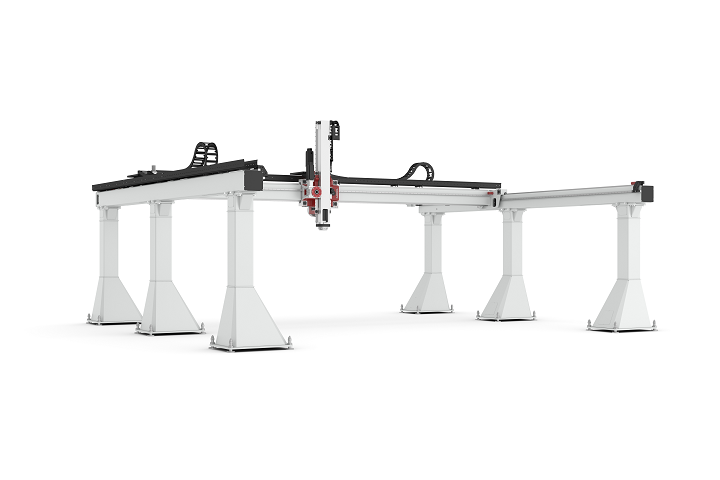 In October 2016, the three-year OpenHybrid project began, a part of the European Union’s Horizon 2020 research and innovation program. The project was designed to address current hybrid manufacturing systems’ commercial and technical limitations. Coordinated by UK-based Manufacturing Technology Centre (MTC), supported by the European Federation of Welding, Joining and Cutting, and with over ten international partners, OpenHybrid has just been finalized.
In October 2016, the three-year OpenHybrid project began, a part of the European Union’s Horizon 2020 research and innovation program. The project was designed to address current hybrid manufacturing systems’ commercial and technical limitations. Coordinated by UK-based Manufacturing Technology Centre (MTC), supported by the European Federation of Welding, Joining and Cutting, and with over ten international partners, OpenHybrid has just been finalized.
The project’s mission was to create new hybrid machines, equipped with both subtractive and additive manufacturing technologies – specifically CNC machining and Directed Energy Deposition (DED) 3D printing. OpenHybrid succeeded in developing two hybrid machines that used subtractive and additive manufacturing to create working parts that collaborate with standardization bodies while also addressing manufacturing and repair applications of automotive, mining, and power generation companies.
The objective for the OpenHybrid project states:
“The OPENHYBRID project will overcome the technical and commercial barriers of current hybrid manufacturing systems to deliver a single manufacturing system capable of undertaking a wider range of processes in a seamless automated operation. The new system will offer unrivalled flexibility in terms of materials, including the ability to switch between powder and wire feed-stock within a single part. Moreover the process can be fitted to a diverse range of platform to produce parts from 2cm to 20m in length. The capability of the OPENHYBRID approach will be validated through the production of industrial demonstrators from the power generation, automotive and mining equipment sectors.”
![]() The consortium developed a hybrid multi-tool platform for medium parts, and another for large parts. The first uses a powder head feed system, which project partner Hybrid Manufacturing Technologies (HMT) created, and the second one uses a wire head feed system developed by HMT and Fraunhofer IPT. Both platforms were successfully demonstrated for repair applications, and can also be used to manufacture new parts as well.
The consortium developed a hybrid multi-tool platform for medium parts, and another for large parts. The first uses a powder head feed system, which project partner Hybrid Manufacturing Technologies (HMT) created, and the second one uses a wire head feed system developed by HMT and Fraunhofer IPT. Both platforms were successfully demonstrated for repair applications, and can also be used to manufacture new parts as well.
“By creating new hybrid machines, equipped with both subtractive and additive manufacturing technologies, OpenHybrid is a game changer for faster creation of new opportunities and applications for Additive Manufacturing,” stated an EWF press release. “This new solution increases the level of robustness and repeatability of such industrial processes, optimises and evaluates the increased performance of production lines in terms of productivity and cost-effectiveness and, finally, provides an effective assessment on the sustainability, functionality and performance of the produced new materials.”
One important part of the project’s approach is its use of a patented, standardized docking system by HMT, which allows for an automatic change to DED processing heads during fabrication for a more flexible process. OpenHybrid also made sure to support the development of AM standards by engaging the ASTM, AWS, CEN, and ISO organizations, so that its applications would be “widely accepted.”
OpenHybrid’s project partners wanted to make sure that it would be easy to integrate its hybrid system onto any machine tool platform and achieve a quality performance. The project’s flexible new approach makes it possible to process both powder and wire feedstock, and combine the system with machine tools and large-scale automation platforms, courtesy of project partners GF Machining Solutions and Gudel, respectively.
Additional extended system capabilities developed by consortium members include:
- CAD/CAM adaptive software – BCT and Picasoft
- Enhanced gas shielding – TWI and MTC
- In-process inspection using thermal and optical imaging and advanced laser ultrasound – MTC and TWI
- Laser ultrasonic NDT inspection for defect analysis – TWI
- Process simulation tools – ESI
OpenHybrid supports the vision and objectives of the EU’s Horizon 2020 Factories of the Future program, and the two systems developed by the consortium members will hopefully make some of the more demanding industries in Europe even more competitive.
Discuss this story and other 3D printing topics at 3DPrintBoard.com or share your thoughts in the Facebook comments below.
Subscribe to Our Email Newsletter
Stay up-to-date on all the latest news from the 3D printing industry and receive information and offers from third party vendors.
You May Also Like
3D Printed Heat Spreader Could Improve Efficiency of Electronics
The low-hanging fruit for decarbonization has long been improving the efficiency of existing systems, hence the justification for LED lights and ENERGY STAR certified appliances. While such minor moves are...
3D Printing News Unpeeled: Marine Gearboxes, 3D Printed Motors and $1.7 Million in Seed Funding
UK based Equipmake just released their Ampere-220 e-axle system. The system, which is meant for high performance electric cars, was similar to one released on the Ariel HIPERCAR. It has...
CEAD Unveils 36-Meter-Long 3D Printer for Abu Dhabi’s Al Seer Marine
CEAD, a Dutch original equipment manufacturer dedicated to large-format 3D printers, has unveiled what it claims to be the world’s largest robotic arm-based 3D printer. At 36 meters long and...
3D Printed Biocomposites Could Help Reduce Marine Plastic Pollution
Concerns about the impact of plastic litter and microplastics in the oceans are at the forefront of environmental study. For decades, the marine environment has suffered from the degradation of...







































